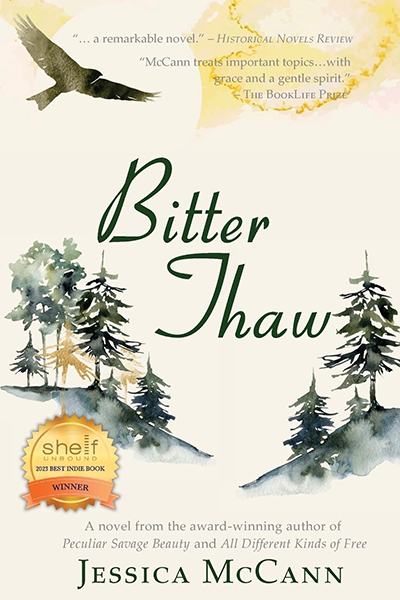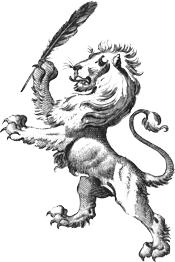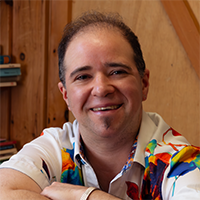 Bitter Thaw
Bitter Thaw
With emotional sensitivity and a strong sense of place, Jessica McCann's historical novel Bitter Thaw depicts a family coming to terms with secrets that have perpetuated patterns of estrangement. This braided tale juxtaposes a war widow's forbidden interracial romance in 1950s Minnesota and her life in Phoenix with her adult son and college-age granddaughter in 1990.
The two halves of Evelyn's story, which she's tried to keep separate for 40 years, collide when a body is discovered in her old hometown of Bitter Rapids, MN, wrapped in a distinctive patchwork quilt that the police hope will help them solve the 1955 cold case. Only Evelyn knows it's her wedding quilt in the newspaper photo. Though she's in failing health, she insists that Frank and April drive her back to Bitter Rapids to get closure on the central event of her life—the truth of which she has never fully disclosed to anyone.
Still mourning the love of her life, a young Evelyn married a closeted and abusive older man to provide security for herself and her sons. Maakade, a half-Native, half-Black ex-convict, comes into their lives when he saves the boys from drowning. He soon becomes a mentor to Frank and a chastely romantic friend to the love-starved woman, but the townsfolk won't accept his presence despite his brave and honorable nature. Tensions build to violence and the family's secretive exit from Bitter Rapids. The central mystery of the book is who died and why.
On their road trip, as April, Frank, and Evelyn unravel past events and share their sometimes competing perspectives, they work through intergenerational disappointments that had kept them from being truly close. The family dynamic reminded me of the Michael Cunningham novel and movie The Hours in the way that the repression of women in the 1950s had understandable but damaging effects on their ability to nurture their children. It was a smart choice to situate the more modern storyline in a landscape utterly different from the 1950s plot.
The contrast between hot, dry, built-up Arizona and cold, wet, rural Minnesota emphasized how thoroughly Evelyn had tried to put everything about her old self behind her. These differences also helped keep the timelines distinct. Though the book wove back and forth between them, I was never confused, because of the informative chapter headings and the pace at which information was revealed. Each dip back into the past would either illuminate something the characters discovered in the previous present-day scene, or set up a question that would be addressed in the next present-day scene.
A couple of plot points, like April's reconciling phone call with her divorced mother, felt sentimental or "Hollywood" predictable. Maakade occasionally veered into "noble savage" territory because of his unselfish dedication to a white family (Evelyn and Frank) at his own expense. I would have liked him to show a little less equanimity sometimes, given the oppression he faced.
The physical book had some typos and a font that was difficult to read because the vertical lines in the letters were thin and faint. The interior layout was otherwise professional. The cover effectively expressed the mood and genre of the novel. The white background conveyed the cold and loneliness of Evelyn's life in Minnesota, and the elegant and simple watercolor images of pines and a soaring bird suggested that this would be a meditative and emotional story.
Bitter Thaw would be an excellent pick for a book club or even a movie adaptation because of its cinematic journey through American culture and landscapes. Its themes of feminism, civil rights, and parenting after trauma would have broad relevance.
Read an excerpt from Bitter Thaw (PDF)
Buy this book on Amazon.








